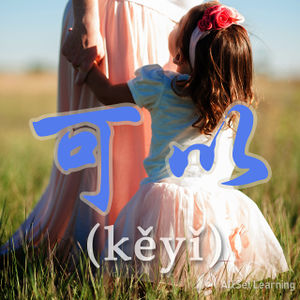Difference between revisions of "Expressing permission with "keyi""
| Line 19: | Line 19: | ||
<div class="liju"> | <div class="liju"> | ||
| − | * 你 <em>可以</em> 坐 在 | + | * 你 <em>可以</em> 坐 在 这里。<span class="trans">You may sit here.</span> |
* 我 <em>可以</em> 看 这 个 吗?<span class="trans">May I see this?</span> | * 我 <em>可以</em> 看 这 个 吗?<span class="trans">May I see this?</span> | ||
* 他 <em>可以</em> 跟 我们 来。<span class="trans">He can come with us.</span> | * 他 <em>可以</em> 跟 我们 来。<span class="trans">He can come with us.</span> | ||
| + | * 我 <em>可以</em> 进来 吗?<span class="trans"></span> | ||
| + | * 你 <em>可以</em>早 点 来 吗?<span class="trans"></span> | ||
| + | * 十 八 岁 以后 <em>可以</em> 喝 酒。<span class="trans"></span> | ||
| + | * 我 <em>可以</em> 要 两 个 吗?<span class="trans"></span> | ||
| + | * 妈妈,我 <em>可以</em> 出去 玩 吗?<span class="trans"></span> | ||
| + | * 现在 <em>可以</em> 吃 饭 吗?<span class="trans"></span> | ||
| + | * 这里 <em>可以</em> 吸烟 吗?<span class="trans"></span> | ||
| + | |||
| + | </div> | ||
| + | |||
| + | == Negating 可以 sentences == | ||
| + | |||
| + | 可以 sentences are [[Standard negation with "bu"|negated with 不]] , which is inserted in front of 可以: | ||
| + | |||
| + | <div class="jiegou"> | ||
| + | |||
| + | Subject + 不 + 可以 + Verb + Object | ||
| + | |||
| + | </div> | ||
| + | |||
| + | == Examples == | ||
| + | |||
| + | <div class="liju"> | ||
| + | |||
| + | * 这里 有 人,你 <em>不 可以</em> 坐 在 这里。<span class="trans"></span> | ||
| + | * 小孩子 <em>不 可以</em> 看 这 个。<span class="trans"></span> | ||
| + | * 他 <em>不 可以</em> 跟 我们 来。<span class="trans"></span> | ||
| + | * 现在 你 <em>不可以</em> 进来。<span class="trans"></span> | ||
| + | * 你 <em> 不 可以</em> 迟到。<span class="trans"></span> | ||
| + | * 十 八 岁 以前 <em>不 可以</em> 喝 酒。<span class="trans"></span> | ||
| + | * 我 <em>不 可以</em> 要 两 个 吗?<span class="trans"></span> | ||
| + | * 妈妈,我 <em>不 可以</em> 出去 玩 吗?<span class="trans"></span> | ||
| + | * 现在 <em>不 可以</em> 吃 饭 吗?<span class="trans"></span> | ||
| + | * 这里 <em>不 可以</em> 吸烟 吗?<span class="trans"></span> | ||
</div> | </div> | ||
| Line 32: | Line 66: | ||
== Sources and further reading == | == Sources and further reading == | ||
| − | |||
| − | |||
* [[New Practical Chinese Reader 1 (新实用汉语课本1)]] (pp. 160-1) [http://www.amazon.com/gp/product/7561910401/ref=as_li_ss_tl?ie=UTF8&tag=allset-20&linkCode=as2&camp=217145&creative=399369&creativeASIN=7561910401 →buy] | * [[New Practical Chinese Reader 1 (新实用汉语课本1)]] (pp. 160-1) [http://www.amazon.com/gp/product/7561910401/ref=as_li_ss_tl?ie=UTF8&tag=allset-20&linkCode=as2&camp=217145&creative=399369&creativeASIN=7561910401 →buy] | ||
| Line 41: | Line 73: | ||
{{Used for|Expressing ability}} | {{Used for|Expressing ability}} | ||
{{Used for|Requesting}} | {{Used for|Requesting}} | ||
| − | {{Basic Grammar|可以|A1|可以 + V| | + | {{Basic Grammar|可以|A1|可以 + V|这里 <em>可以</em> 吸烟 吗?|grammar point|ASG6SPYK}} |
{{Rel char|可}} | {{Rel char|可}} | ||
{{Similar|Expressing ability or possibility}} | {{Similar|Expressing ability or possibility}} | ||
Revision as of 03:55, 6 September 2013
-
Level
-
Similar to
-
Used for
-
Keywords
可以 (kěyǐ) is primarily used for expressing permission.
Contents
Structure
Permission is expressed with the auxiliary verb 可以. It might be helpful to think of 可以 as meaning "may." This will help to keep its functions and usage clear.
Subject + 可以 + Verb + Object
Use this structure to express permission to do things.
Examples
- 你 可以 坐 在 这里。You may sit here.
- 我 可以 看 这 个 吗?May I see this?
- 他 可以 跟 我们 来。He can come with us.
- 我 可以 进来 吗?
- 你 可以早 点 来 吗?
- 十 八 岁 以后 可以 喝 酒。
- 我 可以 要 两 个 吗?
- 妈妈,我 可以 出去 玩 吗?
- 现在 可以 吃 饭 吗?
- 这里 可以 吸烟 吗?
Negating 可以 sentences
可以 sentences are negated with 不 , which is inserted in front of 可以:
Subject + 不 + 可以 + Verb + Object
Examples
- 这里 有 人,你 不 可以 坐 在 这里。
- 小孩子 不 可以 看 这 个。
- 他 不 可以 跟 我们 来。
- 现在 你 不可以 进来。
- 你 不 可以 迟到。
- 十 八 岁 以前 不 可以 喝 酒。
- 我 不 可以 要 两 个 吗?
- 妈妈,我 不 可以 出去 玩 吗?
- 现在 不 可以 吃 饭 吗?
- 这里 不 可以 吸烟 吗?
See also
Sources and further reading
- New Practical Chinese Reader 1 (新实用汉语课本1) (pp. 160-1) →buy
- New Practical Chinese Reader 1 (新实用汉语课本1)(2nd ed) (pp. 185-7) →buy



